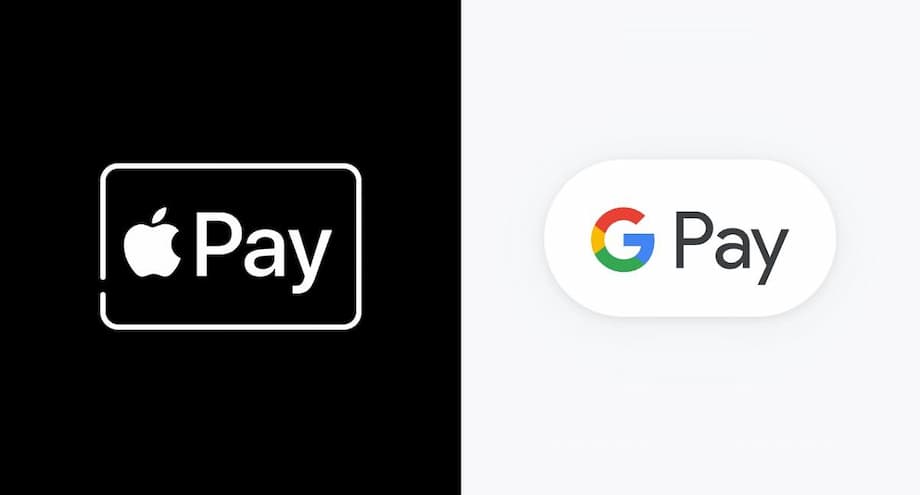Apple Pay and Google Pay Cleared for Philippine Launch Without BSP Registration
The Bangko Sentral ng Pilipinas (BSP) has officially announced that global mobile payment giants Apple Pay and Google Pay can launch their services in the Philippines without the need for prior registration as Operators of Payment Systems (OPS). This regulatory clarification marks a significant milestone for the country’s rapidly evolving digital payments landscape, potentially paving the way for greater convenience and security for Filipino consumers.
- Apple Pay and Google Pay Cleared for Philippine Launch Without BSP Registration
- Why Apple Pay and Google Pay Don’t Need BSP Registration
- The Regulatory Rationale: Technology Service Providers vs. Payment System Operators
- Digital Payments in the Philippines: A Rapidly Growing Market
- Challenges and Next Steps: What Needs to Happen for Launch?
- Benefits and Implications for Filipino Consumers
- In Summary
This decision comes after months of discussions between the BSP and the two tech giants, as both companies explored the requirements for entering the Philippine market. The central bank’s ruling is rooted in the specific way Apple Pay and Google Pay plan to operate locally: they will not hold or process funds directly for Filipino users, but instead act as technology service providers that facilitate payments through existing financial institutions.
Why Apple Pay and Google Pay Don’t Need BSP Registration
At the heart of the BSP’s decision is the distinction between an Operator of Payment Systems (OPS) and a Technology Service Provider (TSP). According to BSP Deputy Governor Mamerto Tangonan, the key criterion for OPS classification is whether a company holds or processes funds on behalf of users. In the Philippine context, Apple Pay and Google Pay will not operate digital wallets that store money for users. Instead, their platforms will simply enable users to link their existing debit cards, credit cards, or e-wallet accounts to make payments using near-field communication (NFC) technology.
As Tangonan explained, “We deemed them not to be an OPS because their activity is not an OPS activity.” He further clarified that since the money does not pass through Apple Pay or Google Pay, and there is no wallet or fund-holding mechanism involved, these platforms do not fall under the regulatory scope that would require OPS registration.
In other countries, Apple Pay and Google Pay sometimes operate digital wallets that can store funds, which would require them to register as payment system operators. However, in the Philippines, their role is limited to facilitating transactions between users and their banks or e-money providers. This distinction is crucial, as it means the regulatory responsibility for the safety and integrity of transactions remains with the local financial institutions, not with Apple or Google.
How Apple Pay and Google Pay Will Work in the Philippines
Once launched, Apple Pay and Google Pay will allow Filipino users to add their existing debit or credit cards, or even e-wallet accounts, to their smartphones or smartwatches. Payments can then be made by simply tapping their device at NFC-enabled terminals in stores, public transport, or other points of sale. The transaction is processed directly by the user’s bank or e-money provider, with Apple Pay or Google Pay acting only as a secure conduit for the payment credentials.
This setup offers several advantages:
- Enhanced Security: Apple Pay and Google Pay use tokenization and biometric authentication, reducing the risk of card data theft.
- Global Acceptance: These platforms are widely accepted in many countries, making them convenient for travelers and international visitors.
- Seamless Integration: Users can continue using their existing bank cards and e-wallets without needing to open new accounts.
- Contactless Convenience: NFC payments are fast, hygienic, and increasingly supported by merchants across the Philippines.
The Regulatory Rationale: Technology Service Providers vs. Payment System Operators
The BSP’s regulatory framework distinguishes between entities that actually move money (OPS) and those that provide the technology to facilitate such movements (TSP). In the case of Apple Pay and Google Pay, the platforms do not touch the funds at any point. Instead, they securely transmit payment instructions to the user’s bank or e-money provider, which then completes the transaction.
BSP Deputy Governor Tangonan emphasized, “It is up to the financial institution to assess these providers, because the entity responsible to the BSP is the financial institution. If anything happens, the accountable party to the BSP is the payment service provider (PSP).” This means that local banks and e-money issuers must ensure that their integration with Apple Pay and Google Pay meets all regulatory and security standards.
For consumers, this arrangement means that their primary relationship remains with their bank or e-wallet provider. If any issues arise with a transaction, it is the local financial institution—not Apple or Google—that is responsible for resolving the matter and for regulatory compliance.
How This Differs from Other Countries
In some markets, Apple Pay and Google Pay operate as digital wallets that can hold a balance, accept cash-ins, and even transfer money between users. In those cases, the platforms are required to register as payment system operators and are subject to more stringent regulatory oversight. In the Philippines, however, the absence of a wallet or fund-holding feature means that the platforms are treated as technology enablers rather than financial intermediaries.
This approach aligns with the BSP’s broader goal of promoting innovation and competition in the digital payments sector, while ensuring that consumer protection and financial stability are maintained through oversight of the actual payment service providers.
Digital Payments in the Philippines: A Rapidly Growing Market
The BSP’s decision comes at a time when digital payments are surging in popularity across the Philippines. According to official data, digital payments accounted for 57.4% of the total volume of monthly retail transactions and 59% of transaction value in 2024. These figures not only surpass the targets set under the Philippine Development Plan 2023-2028 but also reflect a dramatic shift in consumer behavior over the past decade.
BSP Governor Eli Remolona Jr. highlighted the significance of this trend, stating that the growth in digital payments “reflects the continued shift toward digital channels and the growing trust of Filipinos in using digital financial services.” The rise of homegrown e-wallets like GCash and Maya has played a major role in this transformation, offering QR code payments, online transfers, and even some NFC-based features for Android users.
What’s Driving Digital Payment Adoption?
Several factors have contributed to the rapid adoption of digital payments in the Philippines:
- High Smartphone Penetration: As of 2023, smartphone usage in the country reached 73.7%, with projections to hit 97% by 2029.
- Government Initiatives: The BSP has actively promoted digitalization, setting ambitious targets for cashless transactions and financial inclusion.
- COVID-19 Pandemic: The need for contactless payments during the pandemic accelerated the shift away from cash.
- Merchant Acceptance: More businesses, from large retailers to small vendors, are now equipped to accept digital payments.
With Apple Pay and Google Pay entering the market, Filipino consumers will have even more options for secure, convenient, and globally recognized payment methods.
Challenges and Next Steps: What Needs to Happen for Launch?
While the BSP’s regulatory green light removes a major hurdle, the actual rollout of Apple Pay and Google Pay in the Philippines depends on several other factors. Chief among these is the willingness and readiness of local banks and e-money issuers to partner with the platforms and enable their cards for use with Apple Pay and Google Pay.
According to industry observers, banks must integrate their card-issuing systems with the Apple Pay and Google Pay frameworks, ensuring that security, compliance, and customer support standards are met. This process can involve technical upgrades, staff training, and negotiations over commercial terms. Some banks may proceed cautiously, given their responsibility for regulatory compliance and risk management.
As noted in Philstar.com, “The responsibility of enabling Apple Pay and Google Pay now rests with local banks. The BSP said banks as local payment service providers must partner with the tech giants to integrate their card-issuing systems with the Apple Pay or Google Pay framework.”
Comparison with Other Southeast Asian Markets
Elsewhere in Southeast Asia, Apple Pay and Google Pay have seen mixed availability. Apple Pay is live in Malaysia and Vietnam, where major banks have enabled it for their customers. Google Pay (via Google Wallet) is present in Malaysia, Vietnam, and Thailand, but actual functionality varies by bank and region. In some cases, only a handful of banks support tap-to-pay features, and Apple Pay has not officially launched in Thailand despite strong consumer interest.
In the Philippines, the dominance of local e-wallets like GCash and Maya has shaped the digital payments landscape. These platforms already offer QR code payments and some NFC features, especially for Android users. However, the arrival of Apple Pay and Google Pay could boost interoperability, attract more affluent users, and appeal to international visitors accustomed to these global platforms.
Benefits and Implications for Filipino Consumers
The entry of Apple Pay and Google Pay is expected to bring several benefits to Filipino consumers and the broader economy:
- Greater Choice and Flexibility: Consumers can choose from a wider range of payment options, including global platforms with proven security features.
- Improved Security: Both Apple Pay and Google Pay use advanced security measures such as tokenization, biometric authentication, and device-specific transaction codes, reducing the risk of fraud and data breaches.
- Convenience for Travelers: International visitors and overseas Filipinos returning home will be able to use familiar payment platforms, making transactions smoother and more accessible.
- Potential for Innovation: The presence of global players may spur local banks and e-wallet providers to innovate further, improving services and expanding features for all users.
Potential Challenges
Despite the positive outlook, some challenges remain:
- Bank Readiness: Not all banks may be ready or willing to support Apple Pay and Google Pay immediately, potentially limiting initial availability.
- Merchant Acceptance: While NFC terminals are becoming more common, not all merchants are equipped to accept tap-to-pay transactions.
- Consumer Education: Some users may need guidance on how to set up and use these platforms, especially those new to digital payments.
Nevertheless, the BSP’s proactive stance and the growing digital ecosystem suggest that these challenges can be addressed over time.
In Summary
- The Bangko Sentral ng Pilipinas (BSP) has ruled that Apple Pay and Google Pay do not need to register as Operators of Payment Systems (OPS) to launch in the Philippines, as they do not hold or process funds directly.
- Both platforms will act as technology service providers, enabling users to link their existing bank cards or e-wallets for NFC-based payments.
- Regulatory responsibility for transactions remains with local banks and e-money issuers, which must ensure compliance and security.
- Digital payments in the Philippines are growing rapidly, with over 57% of retail transactions now processed digitally.
- The entry of Apple Pay and Google Pay is expected to enhance convenience, security, and global interoperability for Filipino consumers, though actual rollout depends on partnerships with local banks.












